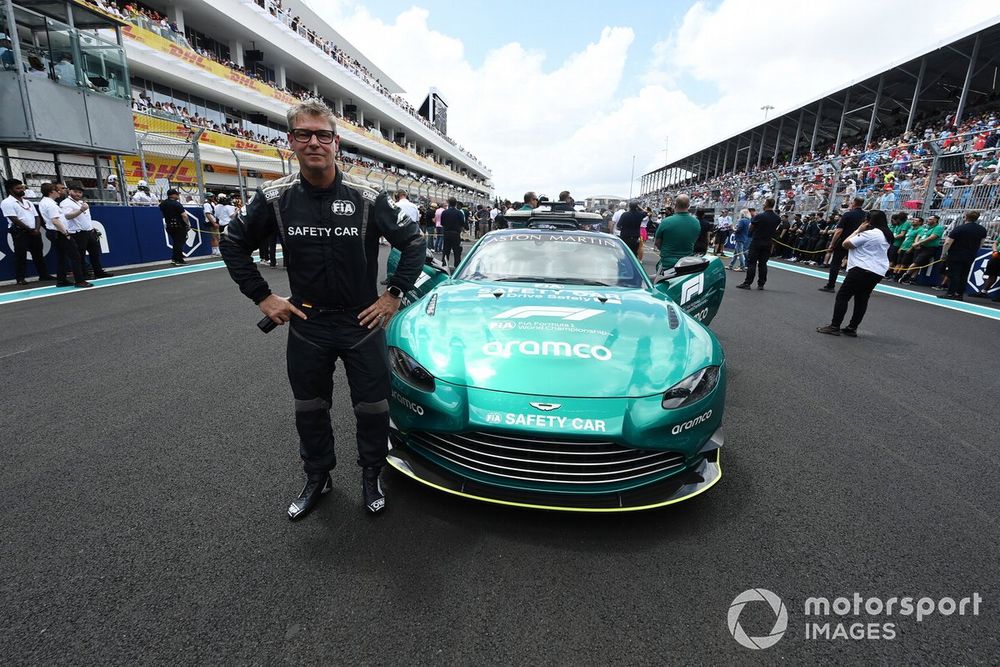Of course, it’s the FIA’s F1 safety car driver Bernd Maylander. The 51-year-old from Waiblingen, in the southwest of Germany, has the ice-cold veins required to keep F1’s racers in check when things go off the rails.
Maylander is in his 24th season of driving the safety car and has only missed a couple of races since his debut in 2000 – including Monaco in 2001, after he fractured his heel falling over a wall while returning to his hotel ahead of a DTM race at Oschersleben. A race-winner in the 1997 FIA GT championship who conquered the Nurburgring 24 Hours in 2000, Maylander has become well versed in the safety car procedure over the years.
He explains: “The two calls are ‘safety car standby’ and ‘safety car deployed’. And the moment they say ‘deployed’ I’m on the track, find the leader – then I get extra information if there’s an accident, maybe I have to stay right or left at a corner, I get told if there is debris.”
Maylander is partnered in the safety car by Richard Darker, an FIA technical assistant.
“I join him for more weekends than with my wife!” Maylander chuckles. “We’re always ready, same parking position at the end of the pitlane, completely dressed, helmets on, and we get all our information from the race director – always ready to go!
“But, for sure, there are some moments where you slow down, your blood pressure comes down after the start, and we have the live feed on two monitors in the car, so we have the timing and the GPS tracker to monitor all the cars on track. If a car crashes we get to know the g-force that car has sustained in the impact.”
Once deployed, Maylander becomes the FIA’s eyes on track, as running up front puts him in a privileged position when it comes to relating feedback.
Maylander is always on stand-by during live sessions to prepare for an incident and is in constant contact with race control
Photo by: Mark Sutton
“Information is everything in this job, but in the end it’s the radio that tells you to go,” he says. “I have my plan, I know what to do, but any other changes come via the radio. We report back to race control as well, such as in rain conditions. But even if I suggest ‘I think this is red flag’ because it’s too wet, the decision is still up to race control.
“I am only one person who can see what’s going on in front, but they have many more inputs. In particular, I’m in a good place to spot any debris on the track, sometimes…
Click Here to Read the Full Original Article at Autosport.com – Formula 1 – Stories…

